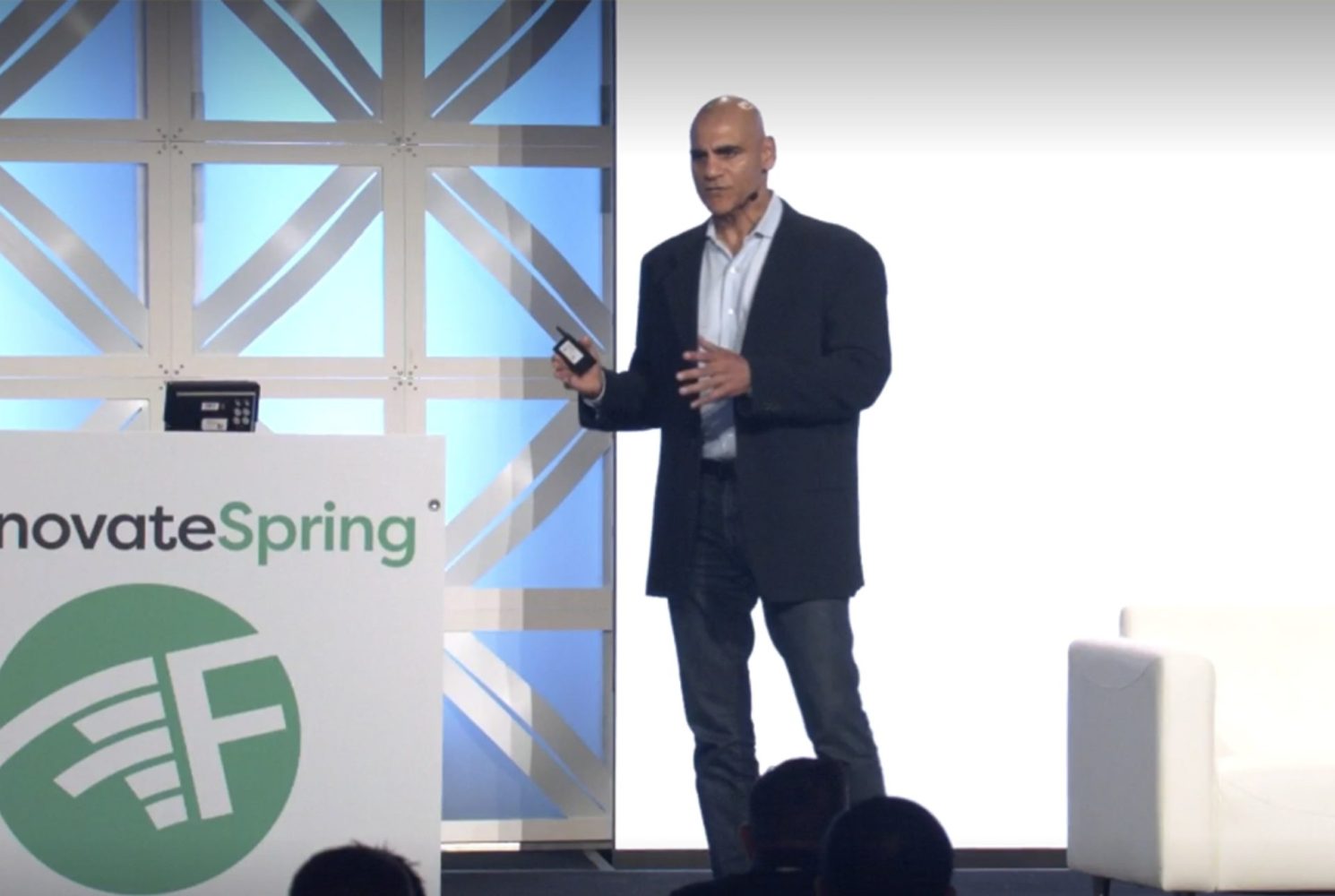June 29, 2022
Realizing the Promise of Connected Channels for Customer Engagement

The primary asset that banks have is customer transaction data. But too often, financial institutions have struggled to translate this data into meaningful intelligence that enables personalized advice at scale and in real-time. With the right approach to advanced data and analytics, financial institutions can achieve a higher level of customer engagement: with unified advice across “connected channels” – digital channels, customer data platforms, and banker channels.
At the Finovate Spring event, I gave a presentation on the maturity path for how banks can achieve this capability:
- Personalized insights and advice: based on cleansing, enriching, and analyzing customer transaction data.
- Journey enablement: combining personalized insights with automated programs to help customers accomplish specific “jobs to be done.”
- Connected channels: offering unified advice across digital and banker channels.
Let’s take a closer look at how to unlock the potential of connected channels at your institution.
Data-driven Personalization: What it Means
Every financial institution is built on a foundation of customer transaction data. By enriching, cleansing, and categorizing that data, and leveraging that data with advanced analytics to offer personalized insights and advice, you will have a powerful capability to achieve data-driven personalization. This is not just a way to sell more stuff; it’s a way to help consumers better manage their day-to-day banking and improve their financial well-being.
By analyzing customer transaction data, financial institutions can understand when customers are better suited to be in a different product. Proactive balance forecasting can help customers realize when they may have a low balance issue (7-10 days ahead of time), so the customer can solve the issue or get help from the bank. Other opportunities might include automated programs that help customers save, manage debt, or invest for the future.
With data-driven personalization, banks can achieve more effective targeting for sales, larger share of wallet, and other business impacts. But this is not just a way to sell more products. It’s a way for banks to realign their relationship model and become trusted advisors who deliver advanced money management capabilities to help customers improve their financial well-being.
Real Life Examples of Banks Adopting Data-Driven Personalization
Several prominent banks have implemented data-driven personalized engagement.
Huntington Bank has branded their data-driven personalization capabilities as Huntington Heads Up® (proactive real-time insights on spending, saving, and low balance issues) and Huntington Money Scout® (automatically saving money from the customer’s spare cash flow with intelligent transfers). They’ve been rated as the #1 mobile app among regional banks by J.D. Power.
DBS, a leading bank in Singapore, offers “Effortless Banking,” an experience that automatically monitors customers’ spending and suggests opportunities to save – while relieving customers of the complexity of managing their finances. DBS has been recognized in 2021 by Financial Times as “Most innovative in digital banking globally” and by EuroMoney as “Asia’s Best Bank.”
Personetics believes that in the next two years, basic personalized insights will be delivered by all banks – and many banks will differentiate themselves by going beyond the basics. Let’s see how this higher level of personalization can work for your institution.
Enabling Customer Journeys: Pay Off Debt
By understanding customer transaction data, banks can help customers with relevant offers and advice for specific journeys and financial jobs to be done.
One example: Pay Off Debt. In the transaction data, we can see that a customer has debt and is starting to revolve debt. The customer’s transaction data also shows that their income is stable.
We can show this customer a few options:
- Debt consolidation: lower the debt payment, show the customer how much they can save.
- Automatically pay down debt: identify how much the customer can safely set aside on an ongoing basis, and offer an accelerated debt paydown solution with intelligent transfers.
Enabling Customer Journeys: Saving for a Goal
Another example: Saving for a Goal. By looking at transaction data, we see that a customer has had an increase in income. They’re starting to move money to an external investment account.
We can give the customer a few options:
- Set up automatic transfers of a certain amount per month that is safe to set aside, based on cash flow
- Help the customer set up an intelligent program where they can set a savings goal, either a dollar amount or a percentage of each paycheck – and move money intelligently in a way that helps the customer make progress toward that goal, without saving “too much” and causing a low balance issue
By adding intelligence to the everyday retail banking experience, financial institutions can drive value for the business and customers alike.
Connected Channels: Digital Plus Human
The connected channels capability is based on an understanding of customers’ financial transaction data, and being ready to proactively offer advice based on their current situation. Connected channels combine the foundation of personalized insights, the advanced automation of journey enablement, and the human element of the banker channel.
By looking at transaction data of a customer’s primary checking account and payment activity, we can identify important insights about the banking customer across their entire financial life, including:
- Banking relationship (primary or secondary)
- Total assets
- Stability of income
- Monthly savings and investments
- Credit cards (internal/external)
- Spending trends
- Cash flow projections
Analyzing customer transaction data can also help banks surface events and opportunities to take action to support a customer, especially when a customer starts spending differently.
For example: customer transaction data might show an occasion when a customer is spending more than usual at home improvement stores. We see that the customer has an external mortgage, no home equity loan, and high branch propensity.
This is where the connected channels approach can be especially helpful:
- Via the digital channel: show the customer relevant content on home improvement and home equity loans, offer an appointment with a banker
- To the banker: give them an action to be taken in their CRM screen, show them that this customer is potentially in the market for a home equity loan
- Populate intelligence to the Customer Data Platform: drive greater marketing conversion across all channels
This information helps bankers have informed, effective outreach to customers, all based on what we know from the customer transaction data.
Ultimately, acting on customer transaction data with advanced analytics can help financial institutions deliver more of a personal human touch. These technological capabilities can deliver on the most fundamental of customer expectations in banking: Know Me, Value Me, Advise Me. It’s a formula that combines the best of digital plus human interactions to achieve business impact and long-lasting customer relationships.
To see the full Finovate Spring presentation, click here.
To learn more about Personetics connected channels capabilities, contact us.
Want to explore how your bank can harness the power of AI to engage and serve customers? Request a demo now
Latest Posts

Explore our Spring Release Highlights – From Integrated Marketing Offers, to Custom Trackers, and AI Innovation

Showing the Human Side of Digital Banking: Insights from Desjardins' Nathalie Larue

The Emergence of Cognitive Banking at This Year's Financial Brand Forum

Jody Bhagat
President of Americas
Jody brings deep operating experience in financial services – managing direct channels, launching digital ventures, and leading digital transformation programs. He was previously a Partner at McKinsey & Company, where he helped financial institutions define and execute digital transformation programs to drive customer growth and operating efficiency. Jody also served in senior digital operating roles at U.S. Bank, Wells Fargo, and Providian. In these positions, he led digital sales and service functions and direct to consumer businesses to deliver organic growth and enhanced customer experience. Jody has an MBA from Northwestern University and a BS in Computer Engineering from The University of Michigan.









